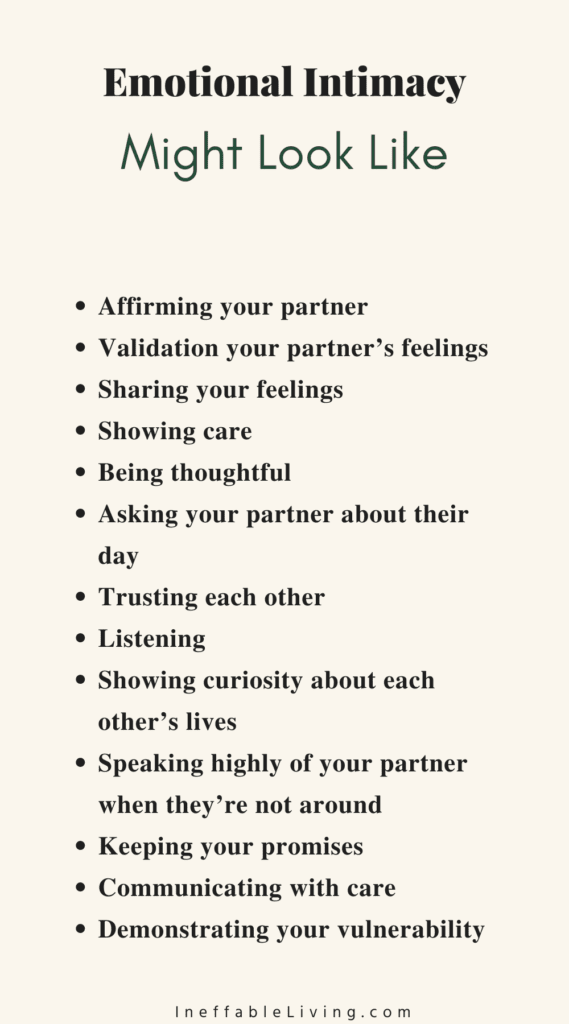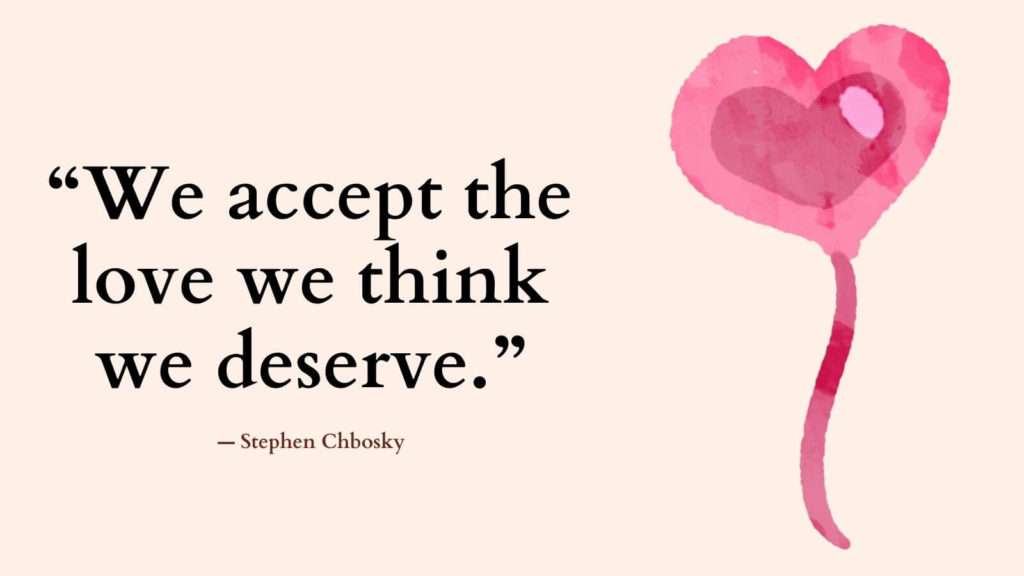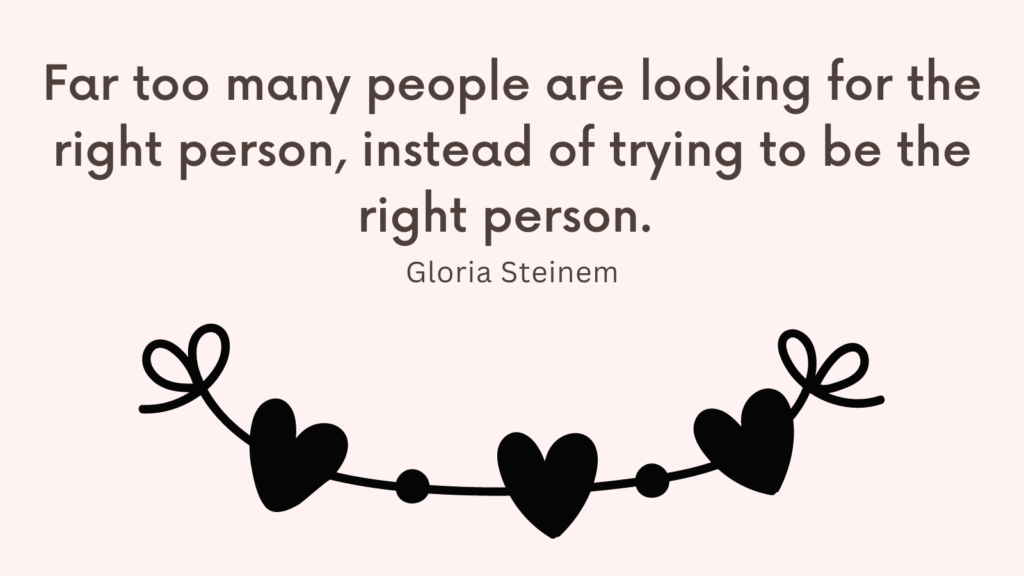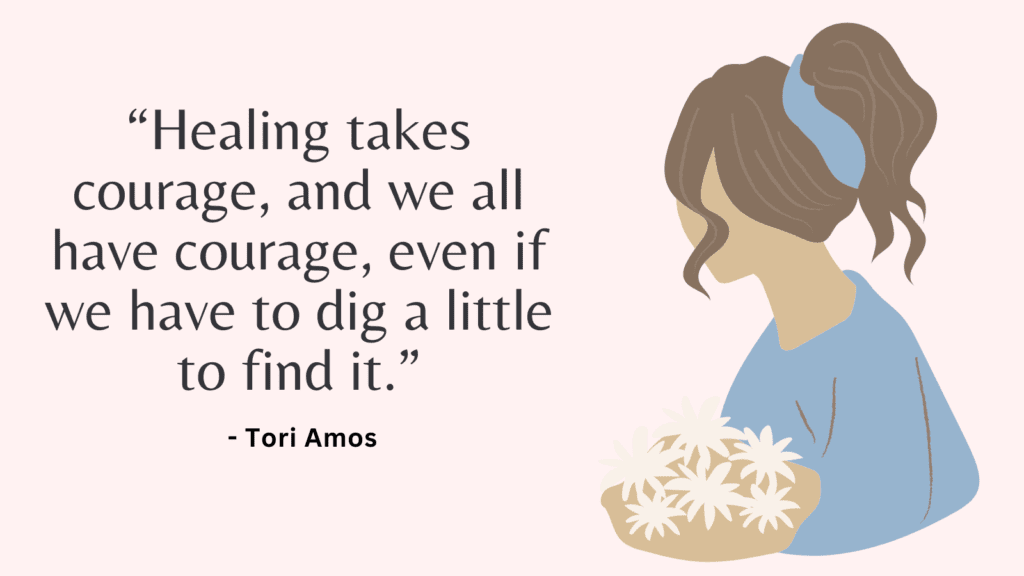Today, you’re going to learn all about healing anxious attachment in adults and becoming more secure.
- What Is Attachment Theory?
- The 3 Different Attachment Styles
- Dependency Isn’t The Problem
- What is my attachment Style?
- Anxious Attachment Style
- Activating Strategies
- Protest Behavior
- Healing Anxious Attachment In Adults In 5 Steps
- How To Work On Anxious Attachment Style and Become More Secure?
- The Secure Buffering Effect
- How To Create a Secure Base For Your Anxious Partner?
- FREE Printable Relationship Worksheets (PDF)
Attachment style is the manner in which people perceive and respond to intimacy in romantic relationships.
It can be divided into three main “attachment styles”: secure, anxious, and avoidant.
What Is Attachment Theory?
Researchers John Bowlby and Mary Ainsworth developed the core of what became attachment theory in the mid-20th century.
Their theory says that infants develop better when their primary caregiver responds to their needs in a warm and timely way.
This theory has been since supported by over 60 years of attachment research.
Attachment researchers observed how babies responded to everyday stressful situations and found that they could categorize these responses into three distinct categories: secure, anxious, and avoidant.
Babies with secure attachment style showed distress in stressful situations, but not in excessive ways. These babies calmed down after interacting with their caregivers and were ready to move on from the stressful event.
Babies with anxious attachment style tended to respond to the same stressful events with more extreme distress. Although they sought their caregiver, they also appeared to reject the caregiver’s attempts to provide soothing.
Babies with avoidant attachment style were less likely to show distress during stressful situations Although these babies appeared indifferent about getting help from their caregivers, researchers discovered elevated stress hormones in their bodies, which means they were affected by stress, but they didn’t show it.
As adults, our attachment style can greatly impact our close relationships as we get close to someone and come to depend on them. This is why observing your close relationships and your response to stressful situations can help you identify your attachment style and your partner’s.
It’s important to note that an accurate assessment of your attachment style can be more complicated than this. Attachment styles exist on a spectrum, and many people with insecure attachment can display both anxious and avoidant patterns at various times.
Related: How To Overcome Avoidant Attachment Style?
The 3 Different Attachment Styles
1. Secure Attachment Style
Secure people are usually comfortable with intimacy.
They don’t worry about being abandoned or about someone getting too close to them. And they have an uncanny ability to effectively communicate their needs and respond to their partners’ needs.
They’re able to share their success and problems with their partners and are also able to allow their partners to depend on them in times of need.
They’re reliable, consistent, and trustworthy, and there is little drama in their romantic ties.
2. Anxious Attachment Style
Anxious people crave intimacy.
They worry a lot about their partner’s ability to love them back, which makes them often preoccupied with their relationships. They fear that their partners do not wish to be as close to them as they would like them to be.
This makes them very sensitive to their partner’s moods and actions, and will often take their partners’ behaviors too personally.
If, however, the other person provides enough security and reassurance, people with an anxious attachment style become more to let go of their relationship obsession and enjoy more satisfaction.
3. Avoidant Attachment Style
Avoidant people equate intimacy with a loss of independence and are constantly trying to minimize closeness with their partners.
They don’t spend much time worrying about their relationships or about being rejected, but they also tend to keep their partner at arm’s length.
Avoidants tend to repress their emotions. They’re also quick to think negatively about their partners.
They see them as needy and overly dependent.
Related: 10 Signs You Were Shamed In Childhood
These differences in attachment styles are making people differ in:
- Their view of intimacy and closeness
- The way they deal with relationship conflict
- Their ability to communicate their wishes and needs
However, it’s not impossible to change one’s attachment style and consciously toward becoming more secure in their attachment styles.
Related: 10 Steps To End Fearful Avoidant Chase
Dependency Isn’t The Problem
We live in a culture that seems to advocate independence and self-sufficiency and scorn basic needs for intimacy, closeness, and dependency in general.
However, studies show that most people are only as needy as their unmet needs.
When their emotional needs are met, preferably early enough, they turn their attention outward and the more independent and daring they become.
Moreover, dependency isn’t a choice or a preference, it’s a fact.
Many studies show that once you become attached to someone, they regulate your blood pressure, your heart rate, your breathing, and the levels of hormones in your blood.
In other words, you become one physiological unit. This means that if one is upset, that will make the other partner upset too.
On the other hand, this doesn’t mean that in order to be happy we need to be joined with our partner at the hip and give up other aspects of our life such as our friends and career.
In fact, even the knowledge that our partner is available to us psychologically and emotionally can temporarily replace one’s continuous need for physical presence.
Related: 5 Basic Emotional Needs of Men and Women
What is my attachment Style?
Two criteria can help you determine your attachment style:
1. How comfortable you can with intimacy, or the degree to which you avoid it.
2. Your preoccupation with the relationship and the degree to which you’re anxious about your partner’s ability to love you back and give you attention.
– If you feel comfortable with intimacy and you don’t obsess much about your partner’s love, then you’re probably secure.
– If you crave intimacy and are insecure about the relationship and your partner’s love, then you’re probably anxious.
– If you feel uncomfortable with intimacy and closeness and value your independence more than the relationship, and don’t tend to worry much about your partner’s feelings toward you, then you’re probably avoidant.
Related: Affection Quiz (+3 Strategies To Increase Affection In Your Relationship)

Anxious Attachment Style
What happens when your needs for intimacy aren’t met?
When someone with an anxious attachment style gets in a relationship with someone with an avoidant attachment style, he might not get his needs for intimacy met.
As a result, he resorts to protest behaviors in an attempt to get their partner’s attention. This can include the following:
- Excessive attempts to reestablish contact. Calling, texting, waiting for a phone call…
- Withdrawing and ignoring your partner.
- Keeping score. You start paying attention to how long it took them to return your phone call and might wait just as long to return theirs.
- Acting hostile.
- Threatening to leave while hoping they’ll stop you from leaving.
- Making them jealous.
These protests can be harmful to you and the relationship, and can even continue long after your partner is gone.
To stop this downward spiral, you’ll need to be with someone with a secure attachment style who can satisfy your intimacy needs.
That is if you’re single and are looking for the right partner for you.
Paradoxically, anxious people often end up dating people with an avoidant attachment style.
Part of the reason why is because each partner, in a way, reaffirms the other’s beliefs about relationships and about themselves.
The avoidants’ belief that there are independent and that others want to pull them into more closeness than they are comfortable with is confirmed.
The anxious, on the other hand, finds out that their belief of wanting more intimacy than their partner can provide is confirmed.
Another reason, why anxious people end up dating avoidants, is because people with an avoidant attachment style tend to end their relationships more frequently.
This means that they’re in the dating pool more frequently and for longer periods of time.
Secure people, on the other hand, don’t usually go through many partners before settling down and they often form a long-lasting committed relationship.
Related: Fear Of Intimacy Quiz (+13 Tips On How To Increase Emotional Intimacy In A Relationship?)
Activating Strategies
Activating strategies are any thoughts or feelings that compel you to seek emotional and physical closeness to your partner.
Those thoughts and feelings may include:
- Thinking about your partner so much so you’re unable to concentrate on other things.
- Putting your partner on a pedestal by remembering their good qualities only and/or underestimating your talents and attributes.
- Experience anxious feelings that only go away when you contact your partner.
- Worrying that this is your only chance for love and that you’ll spend the rest of your life alone if you lose this person.
- Being in denial and believing that your partner will change, even though you’ve been unhappy for so long.
Related: Top 18 Journal Prompts For Anxious Attachment
Protest Behavior
Protest behavior refers to any indirect action we take when we’re feeling uncomfortable emotions and try to draw attention to them – that is we let our attachment style get the best of us.
Protest behavior can cause you to act in ways that are harmful to the relationship. It is very important to learn to recognize when you’re engaging in protest behavior.
Examples of protest behavior may include:
- Excessive attempts to reestablish contact (e.g. calling or texting many times, or loitering by their workplace in hope of running into them, etc.)
- Keeping score (e.g. waiting just as long as they took to return your text before you return theirs, acting distant until they make the first “make-up” move, etc.)
- Withdrawing (e.g. not speaking, pretending you’re busy doing something else, talking with other people on the phone and ignoring your partner, etc.)
- Acting passive-aggressively (e.g. getting up and leaving the room while they’re talking, rolling your eyes when they speak, etc.)
- Manipulation (e.g. ignoring phone calls, acting unapproachable, etc.)
- Making them feel jealous (e.g. telling them about someone who hit on you today, making plans to get together with an ex for lunch, etc.)
Healing Anxious Attachment In Adults In 5 Steps
1. Acknowledge and accept your relationship needs
Unless your needs for intimacy and closeness are met, you cannot be truly happy in a relationship.
The key to finding someone who can fulfill those needs is to first acknowledge them.
They’re not good or bad, they’re simply your needs, and you should let others make you feel guilty for having them, or make you believe that you’re too needy or too dependent.
When you acknowledge your relationship needs as legitimate, you become able to assess people you date based on their ability to meet those needs.
Instead of wondering how you can change yourself to please your partner, you’ll be thinking can this person provide what I need in order for me to be happy?
Read More: Struggling to Receive? 7 Steps to Open Up and Start Accepting Loved and Support
2. Recognize and rule out avoidant prospects early on
Look out for clues that the person you’re dating can be avoidant.
These clues can include sending mixed messages about their feelings or commitment to you, longing for an ideal relationship, or an ideal partner, disregarding your emotional well-being and suggesting that you are ”too needy”, or “overreacting” …
Such behaviors can indicate that the person you met is an avoidant, however, the best way to decide whether or not he’s able to meet your needs, is through effective communication.
Understanding the attachment style of your partner can give you insight into your partner and shift your thinking from “does he or she like me?” to “Is this someone capable of giving me what I need? Is he or she someone I should invest in emotionally?” this will help you decide if the relationship is right for you.
3. Be your authentic self and use effective communication
Anxious people easily fall into the trap of trying to accommodate their partner’s needs –if they’re involved with someone avoidant- at the expense of theirs.
They hide their wishes and maintain a self-sufficient façade.
By effectively communicating your needs, you become your authentic self, which contributes to your happiness and fulfillment.
But you also are able to determine whether or not your partner will be able to meet your needs early on.
Related: 4 Keys To Communicate Effectively With Anyone
4. Develop a philosophy of abundance
Adopting an abundance philosophy is a useful step for finding the right partner for you. Keep in mind that as there are many people who aren’t right for you, there are also many charming people out there who are and can make you happy.
By using the abundance philosophy, you can rule out people who make you feel insecure or inadequate early on.
However, be aware not to miss on a keeper.
5. Give secure people a chance
When you meet a keeper, remember not to make an impulsive decision about whether or not he/she’s right for you.
With less drama involved, you might feel bored at the beginning and conclude that your calm relationship is a sign of lack of attraction.
Give it some time. You may start to appreciate the calmness in the relationship and what it has to offer.
Related: The Ultimate Guide to Finding The Right Guy For You

How To Work On Anxious Attachment Style and Become More Secure?
Although secure attachment can sound unattainable, it’s how we are fundamentally designed to operate. Even when we lose access to it every now and then, we always have the capacity to recall it and practice it.
The attachment style is a forgiving system. We may find ourselves distracted and not as present as we’d like to be. We may also have arguments and emotional reactions we’re not proud of.
All of this is normal. The goal isn’t to be perfect, but to have enough presence and self-awareness to know when things are less than ideal and enough compassion to make amends and make things better.
#1. Gather Support
Take a moment to think of people in your life who have a secure attachment style. Think of their behavior or your interactions with them that give you a sense of trust, safety, reliability, understanding, and presence.
These people could be from your past or your present. They could be family members, teachers, therapists, friends, or even strangers.
Visualize yourself surrounded by them, sense their goodwill, and notice how you feel when you do this.
#2. Listen Deeply
Listening deeply helps us become more present in a relationship and allows us to connect with the other person in a manner that helps them feel safe enough to communicate their feelings and needs.
When you listen deeply, you’re not waiting for the other person to finish so you can jump into the conversation and say what’s on your mind. Rather, you’re listening with an attitude of curiosity with the intention of understanding the other person’s perspective before explaining yours.
That isn’t to say that you have to believe or agree with everything they’re saying. Rather, you just need to understand why they are saying what they’re saying and affirm that given their own perspective, it makes sense that they’d think that way.
You may say something like, “I can see how you’d be upset about that.”
To listen and understand someone can be the most loving thing we can do because more than we want to convince, we really just want to be heard and understood.
#3. Become More Present
Listening is one way to practice being present. But you can also practice presence in other ways.
Presence means paying attention, showing up, and letting the other person know that we’re there for them.
This is especially difficult to do today with how distracted and busy we’ve become. It takes an intentional effort to put your phone away or resist taking out your laptop and getting some work done.
#4. Practice Compassion
Compassion can be a skill that you can practice and develop. This skill combines listening and a lot of empathy.
Renowned psychologists Daniel Goleman and Paul Ekman, outlined three types of empathy: cognitive, emotional, and compassionate.
Cognitive empathy refers to our ability to put ourselves in someone else’s shoes and get their perspective.
Emotional empathy (also known as affective empathy) refers to the ability to share someone else’s feelings as if you had caught the emotion.
Compassionate empathy refers to not only the ability to share someone’s feelings but to also feel moved to help if needed.
When we feel compassion towards someone else, we don’t just feel and understand their struggles, we also let the other person know that we’re there for them.
#5. Do Things Together
Activities done together can foster a more secure attachment with the other person when enacted with joint attention.
Joint attention means mutually being there for each other, whether you were meditating together, dancing, making meals, or exercising.
You could even be watching TV and practice joint attention by occasionally making eye contact with each other, having a conversation later about the movie, etc.
#6. Maintain Contact
Maintaining contact increases your responsiveness. This could be done through eye contact, calls, texts, or touch.
Practicing this skill requires being mindful when responding to messages from the other person. This is because often we’re not so direct and can use conflict and complaint to communicate our needs.
For example, beneath the complaint, “Why can’t you call when you know you’re going to be late,” is the message, “I really love you, and I miss you when you’re gone.”
It’s important to remind yourself when you’re practicing maintaining contact to avoid keeping score on who is responding more or the quickest.
Finally, when you’re practicing contact maintenance with someone else, it’s important to avoid keeping score on who is responding the best or the quickest as long as you’re both doing your best to improve on answering calls for connection.
Related: Emotionally Unavailable Husband Quiz
#7. Apologize and Make Amends
John Gottman, a psychological researcher and clinician, conducted a study with newlyweds that followed them for six years. He found that couples who stayed married practiced repairing ruptures in their relationship 86% of the time, whereas those who divorced turned toward each other to repair only 33% of the time.
We all make mistakes but we can still apologize and make amends. This is an essential skill in maintaining a secure attachment.
However, as easy as this might sound, many of us never learned to acknowledge our mistakes or take responsibility for them in the first place.
So if repair isn’t something that comes naturally to you, you’ll need to practice it more. This also means practicing becoming more open to receiving repair from the other person.
When someone comes forward with some gesture of reconciliation, try to recognize it and appreciate it for what it is, rather than focusing on how it falls short (they don’t truly understand how they hurt us, they didn’t apologize just right, etc.).
Related: Best 21 Forgiveness Journal Prompts (+FREE Worksheets PDF)
The Secure Buffering Effect
What Happens When Secure And Insecure Interact?
Studies show that people with a secure attachment style, maintain a high level of satisfaction in their relationships than people with other attachment styles.
Studies also show that there was no observed difference in couples functioning between partners who were both secure and partners who were mixed (secure and insecure).
In fact, secure people can create a buffering effect that manages to raise their insecure partner’s relationship satisfaction and functioning to their own level.
Because secure people fit almost every description across the personality spectrum (they can be introverts, extroverts, ambivert…), it’s hard to recognize them, at least at first.
In fact, secure people are characterized by something not outwardly visible. They expect their partner to be loving and don’t obsess about losing their love.
They’re comfortable with intimacy and have an uncanny ability to communicate their needs and respond to their partner’s needs.

How To Create a Secure Base For Your Anxious Partner?
1. Be available
Allow your partner to depend on you when they feel the need and respond sensitively to their distress.
2. Don’t interfere
Help your partner in a way that allows them to feel in control.
Allow them to do their own thing without trying to take over the situation or undermine their confidence and abilities.
3. Encourage
Be accepting of their learning and personal growth goals and provide the necessary encouragement to boost their self-esteem.
This is not to say that people with a secure attachment style are immune to relationship problems.
They too may one day get into an unhealthy relationship.
In fact, despite their ability to make their partners more secure, when they find themselves becoming less secure with a partner, not only do they lose their priceless gift, but they also experience less happiness and satisfaction in their relationship.
This happens especially when secure people aren’t experienced and continue to respond to and tolerate their long-term unacceptable behavior.

FREE Printable Relationship Worksheets (PDF)
References
- Portions of this article were adapted from the book Attached: Are you Anxious, Avoidant, or Secure?, © 2010 by Amir Levine and Rachel Heller. All rights reserved.
- Anxious Attachment Style Guide: Causes & Symptoms (attachmentproject.com)
- Anxious Attachment: How to Know If You Have It and What to Do About It (webmd.com)
- Anxious Preoccupied Attachment | Integrative Life Center
- Attachment Theory 101: Your Guide to Anxious Attachment Style – Relish (hellorelish.com)
- Can You Go From Insecure to Secure Attachment Styles? (psychcentral.com)
- Attachment Styles and How they Affect Your Relationships (markmanson.net)
- Anxious Attachment: Strategies for Coping (verywellhealth.com)
- What Causes Anxious Attachment Style & How To Heal (parentingforbrain.com)



